6 mistakes to avoid when propagating plants in water – and what to do instead
Give your new cuttings the best chance of success by avoiding these water propagation mistakes
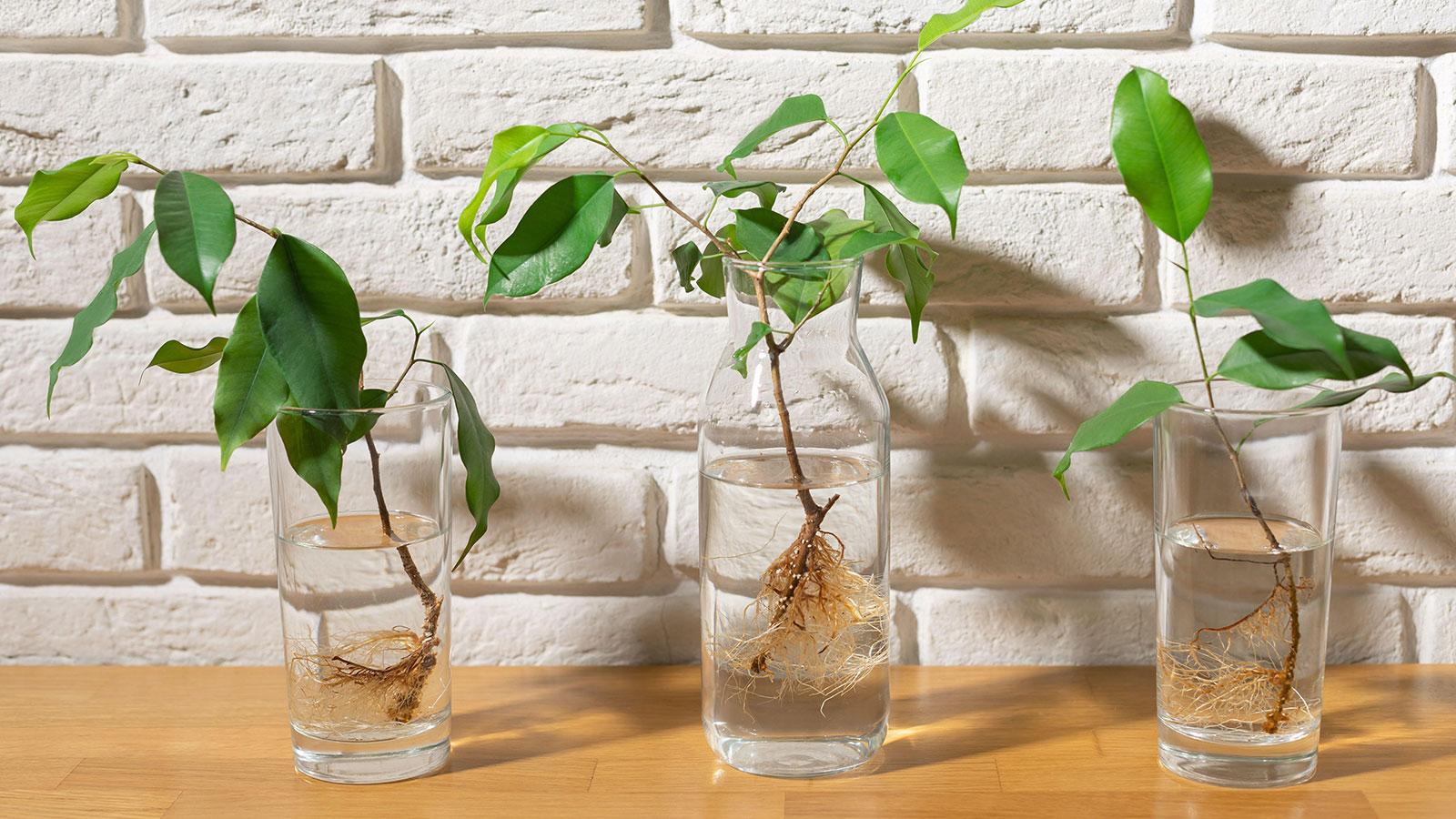
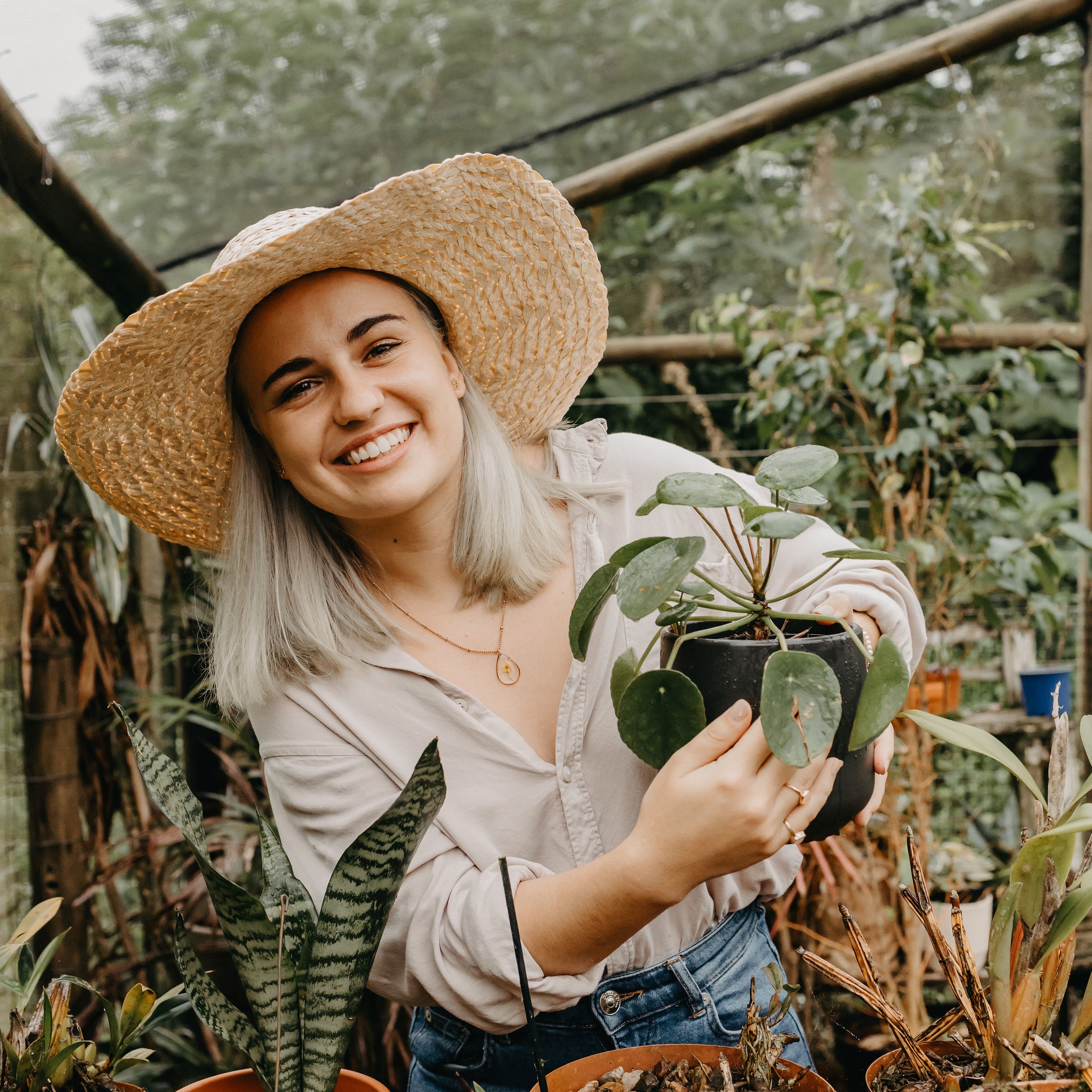
When gardeners first try propagation, water propagation is usually the go-to method. There are few tools required, it’s easy to understand, and best of all – it’s fun to watch the roots grow over time.
Unfortunately, although water propagation is easy, it’s not as simple as placing a cutting in water and walking away. Houseplant propagation mistakes are common, and usually only discovered when you make them for yourself and realize your propagating efforts won’t be successful.
I’ve made many water propagation mistakes myself and killed many cuttings along the way. By sharing what I've learned, you can avoid making the same errors and get water propagation right the first time, and hopefully every time after that.
Common water propagation mistakes to look out for
If you like taking cuttings from plants as a way of getting more plants for free, avoid these common errors when propagating them in water.
1. Propagating everything in water
Although propagating in water is generally preferred over propagating in soil, it doesn’t mean all plants can or should be propagated in water.
For starters, plants typically develop stronger roots in soil than in water due to the resistance. These early roots are also instantly accustomed to soil conditions, as opposed to water roots that need a period of adjustment after transplanting.
Some plants also struggle to root in water but quickly root when planted in soil. Fiddle leaf figs are just one example. I have tried rooting Ficus lyrata cuttings in water more times than I’d like to admit, with limited root growth or no root growth at all. However, all the cuttings I’ve planted in soil have rooted quickly with no struggles.
I’ve had the same experience with ZZ plants. Several of my cuttings did develop tubers in water, but the process took several months and many rotted in the process. In the same time, the cuttings I rooted in soil were already established and happily taking off.
You can try these experiments for yourself by rooting cuttings in both water and soil. Alternatively, do your research before you start to determine the best propagation method, and opt for some of the easiest houseplants to grow from cuttings. As a general rule, softer growth is easy to root in water, while woody growth is best rooted in soil.
2. Using the wrong containers
One of the benefits of water propagation is the limited tools required. You don’t need to worry about a specialized pot with drainage or a soil mix – all you need is a glass and some water.
However, your choice of glass is more important than you may think. It needs to be deep enough to allow the cutting to rest inside the glass without falling over, but not so deep that the entire cutting falls in. The exact size will depend on what plant you are propagating. Some will only be a few inches long, while others need to be much longer to ensure strong root growth.
Propagation stations, such as this desktop propagation station from Amazon, are perfect for this as they are designed for water propagation. The neck of the glass usually tapers in slightly, allowing you to rest the cutting inside without it falling over.
Luckily, if you don’t have one of these handy stations, you can still turn any glass into the perfect propagator. When my propagation stations are full, I take any glass and cover the top with clear plastic wrap, making a hole in the center. Simply pop the cuttings through the hole and the bottom will be submerged while the top stays dry. This is especially useful for plants where only the very bottom needs to be submerged, such as when propagating a spider plant.
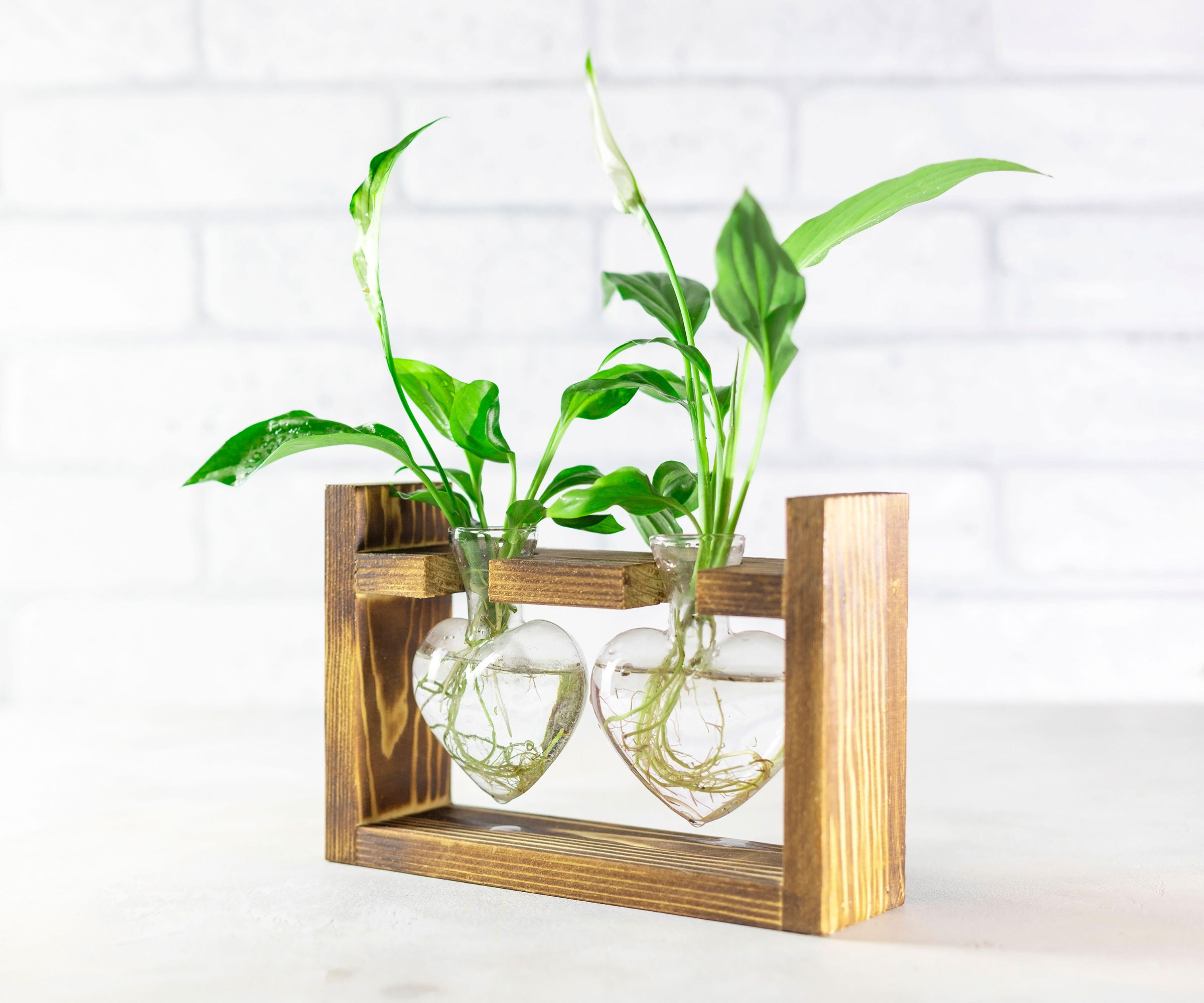
A propagation station can be useful, but you can use most glass containers for rooting cuttings in water
3. Not topping up or changing the water
Once you’ve popped your cutting inside your glass, you (unfortunately) can’t leave it alone and hope for the best. Water propagation requires upkeep and attention if you want roots to develop successfully. The most important part of this upkeep is monitoring water levels and changing the water.
In order for root growth to occur, the bottom of your cutting and any exposed nodes need to be constantly submerged in the water. If the water evaporates from the glass over time, these growth points and vulnerable new roots may be exposed to the air, stunting growth and potentially killing off the cutting. Make sure you keep water levels consistent by topping up the water to always cover the bottom part of the cutting.
Along with regular top-ups, you should also change the water completely around once a week. There is a reason we don’t like to drink stagnant water that’s been out for days – oxygen dissipates over time and the water gathers bacteria that affect quality. Algae may collect inside the glass and the roots will struggle to develop.
I noticed this issue when propagating a Monstera cutting and I left it in the same water for several weeks while traveling. When I returned, the bottom of the glass was completely green and the leaves had turned a sickly yellow. Some of the roots were also exposed to the air, leaving a very unhappy cutting.
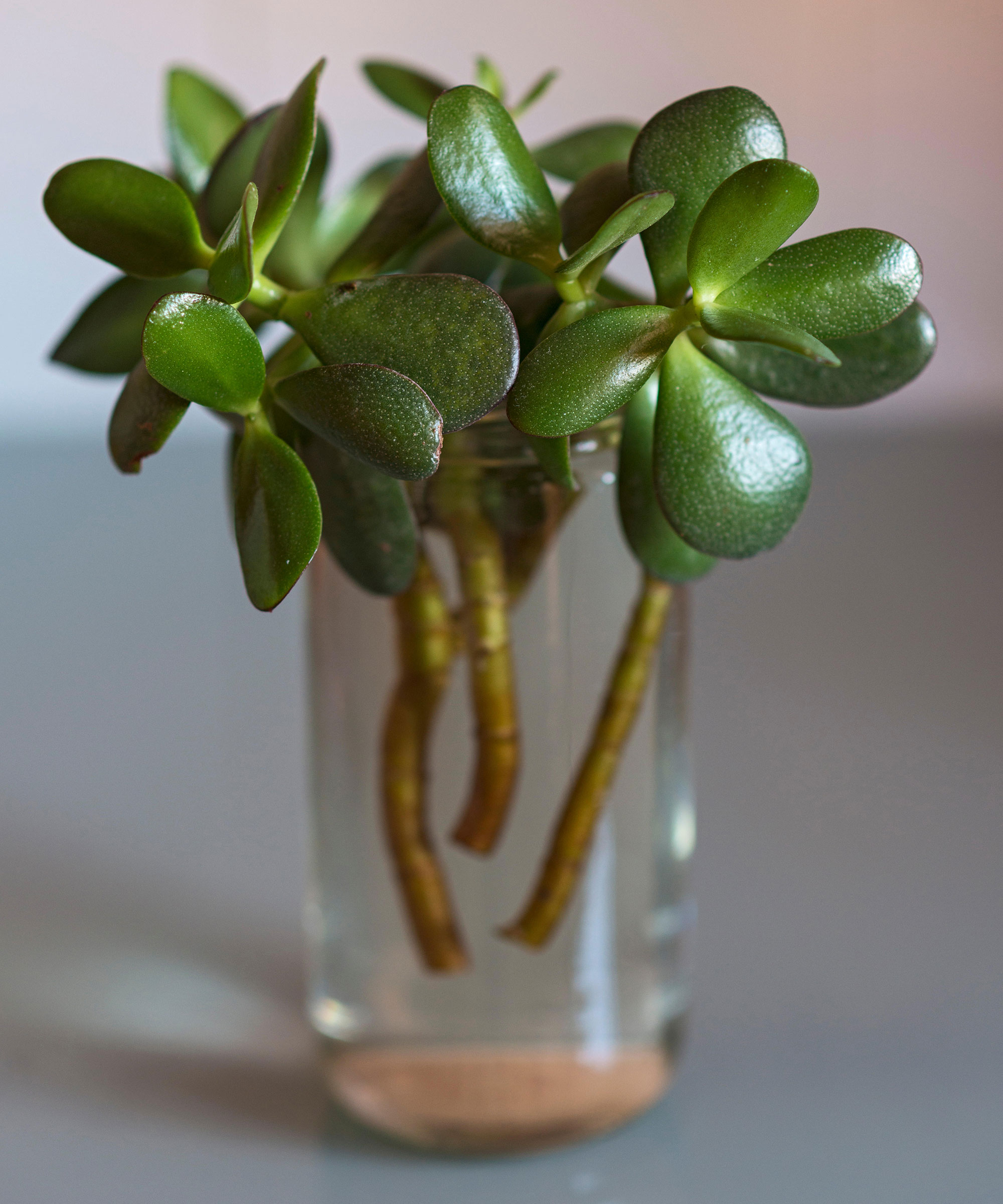
Ensure the water stays fresh to keep your cutting growing well
4. Submerging the whole cutting
When taking cuttings for most plants, the general advice is to remove any foliage on the bottom half of the cutting – not doing so is a typical plant cuttings mistake. Getting rid of any leaves exposes the nodes for root growth and removes any leaves that may rot under the water. The same advice applies when preparing cutting garden flowers for a vase – always remove any leaves that would sit below the water line – for the same reason.
One of the biggest mistakes you can make, following from these tips, is submerging the entire cutting in water – leaves and all. First, the leaves will quickly rot, spoiling the water and spreading the problem to the rest of the cutting. But more importantly, the leaves won’t be able to provide the energy needed to produce roots, halting your propagation efforts completely.
You should only submerge the part of the cutting that will develop roots – never the leaves – to avoid unnecessary mishaps.
5. Forgetting about lighting conditions
As water propagation is a quick and easy process, I like to snip cuttings from my indoor plants every few weeks to pop them in a glass of water to continue propagating over time. Many gardeners do the same, using the glasses as living decor around their homes at the same time.
But when we consider the decorative value of these propagation stations first, we often forget that their placement has a direct impact on root growth, especially when it comes to lighting.
Most cuttings develop the strongest roots in bright indirect light. Direct sun can scorch the leaves and dry out the stems, while low light doesn’t provide enough energy for root production. Low lighting conditions can also increase your chances of rot.
If you don’t have the right spot, consider investing in grow lights. Matthew from TechPlant experimented with the use of grow lights in propagation and found much greater success compared to cuttings in low light. ‘I think this experiment shows how important it is that you give your cuttings good light,' he says. This simple grow light from Amazon would be ideal for your cuttings.
6. Waiting too long to transplant
The final mistake is one I’ve made a couple of times – waiting too long to transplant. We often get so wrapped up in watching roots grow that we forget we need to eventually move them into soil.
As mentioned, the roots cuttings develop in water are not as strong as soil roots. The longer you wait to transplant, the harder it will be for these sensitive roots to adapt to soil conditions. You can leave them to grow in water long-term if you are willing to continually add fertilizer to the water, but if you plan to have them in a pot eventually, it’s better to transplant them sooner rather than later.
Most cuttings can be transplanted to soil when the roots are about an inch or two long. If you like the look of the cutting in the vase and use it as a way to decorate your home with plants, it's better to transplant and propagate again with a new cutting than wait too long and risk damage.
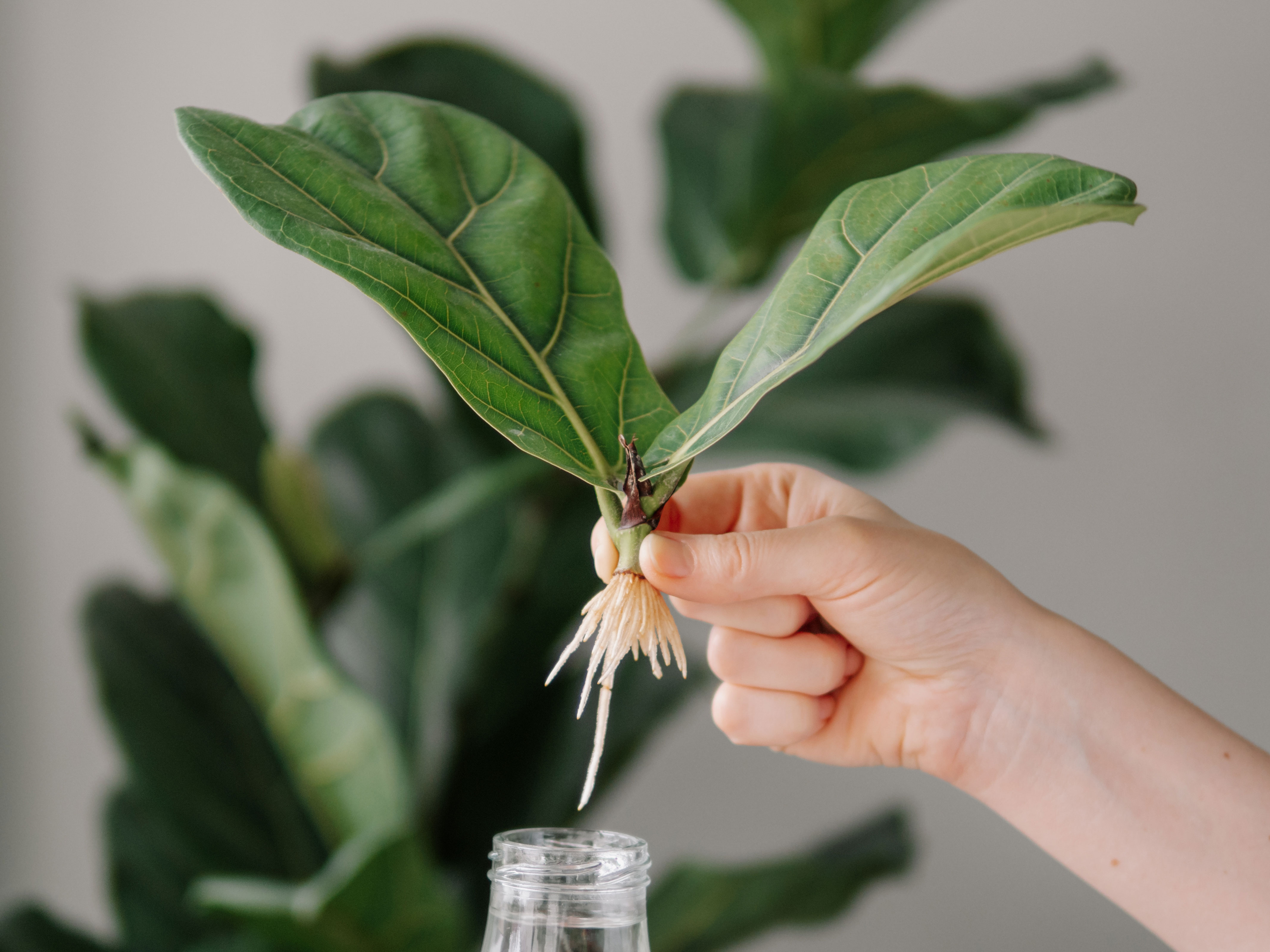
Once roots start to develop, you can pot the cutting on in soil
Once you're aware of the common water propagation mistakes, starting off your new cuttings in water can be a wonderful way to grow your plant family.
Soft-stem plants – especially vines with several nodes along the stem – root the quickest in water. Some popular plants to try include pothos, heartleaf philodendron and spider plants.
Sign up to the Homes & Gardens newsletter
Design expertise in your inbox – from inspiring decorating ideas and beautiful celebrity homes to practical gardening advice and shopping round-ups.

Madison is a garden writer and editor, covering all things outdoors and lifestyle. After completing a BA in History and Political Science, she transformed her years-long passion for plants into a career writing for both digital and print publications. As garden editor of several print titles, Madison focuses on trends and developments in the continuously expanding gardening industry. When not typing away at her desk, she tends to her ever-growing houseplant collection and travels frequently, photographing and reporting on gardens around the world.
-
 Zooey Deschanel and Jonathan Scott's breakfast nook is an innovative, effective use of kitchen space – it turns a 'dead area' into a cafe-style corner
Zooey Deschanel and Jonathan Scott's breakfast nook is an innovative, effective use of kitchen space – it turns a 'dead area' into a cafe-style cornerJonathan and Zooey have situated an eccentric yet elegant dining area in what may have been an otherwise underused corner
By Hannah Ziegler Published
-
 6 things you should never throw in the trash – and what to do for safe disposal instead
6 things you should never throw in the trash – and what to do for safe disposal insteadFrom batteries to space heaters, experts reveal what not to throw
By Andy van Terheyden Published